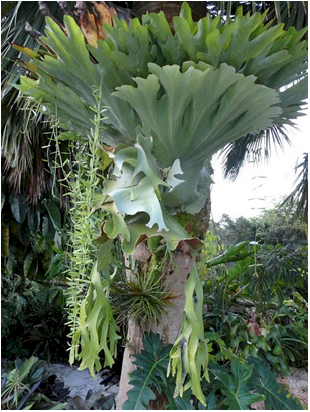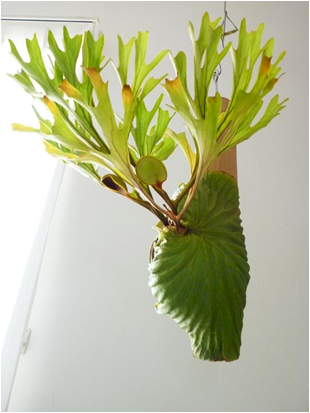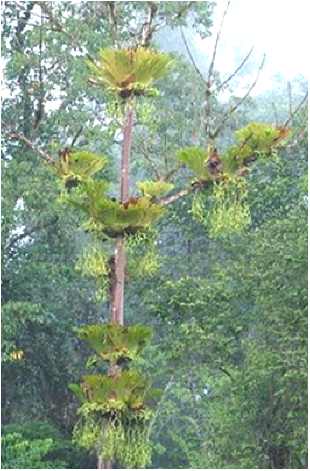|
Shield Frond Characteristics |
|
Platycerium shield fronds tend to be tall and deeply lobed to round with no lobes, and in some cases with deep ridges or valleys for water control. On this page we are going to show how the shield fronds grow in different forms; basket, ball, or ring. |

The Basket Form of shield fronds grow outward to catch water, bird droppings, and tree leaves that eventually decay and provide essential elements for the platycerium. P. bifurcatum, P. grande, P. holttumii, P. stemaria, P. suprbum, P. vietchii, P. wandae, and P. wallichii
Photo: from Google Images |

The Ball Form
of shield frond grow inward toward its host and restricts excessive water
from entering the root ball. These are usually found in wetter
climates that rains alot. The platyceriums in this group include,
P. alcicorne,
P. ellisii,
P. hillii,
P. madagascariense, and
P. ridleyii
Photo: from Google Images |

The Ring Form
grows in a ring around the host plant. These
platyceriums tend to pup on a horizontal plane relative to the bud.
Eventually enough pups form to encircle the host tree forming a ring.
The ring functions like a basket to catch rain water, and miscellanous
droppings that fall into the ring basket. Platyceriums that grow rings
are: P. Andinum,
P. Coronarium,
P. elephantotis,
P. willinckii, and
P. quadridichotomum
Photo: from Google Images |
|
[ Home ] |